The highly revered artistic tradition of making Tibetan butter sculptures has been practiced for over 400 years by monks in the monasteries in Tibet. The art of making Tibetan butter sculptures is now being preserved by monks and nuns living in India as refugees.
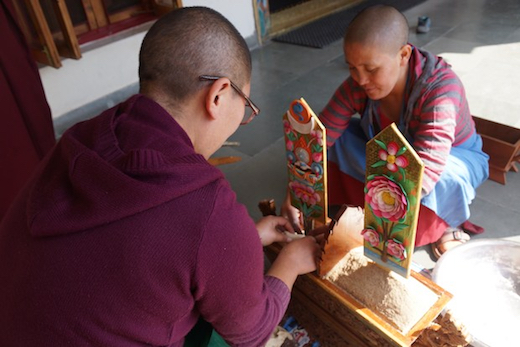
Tibetan nuns decorate a traditional offering box for Tibetan New Year or Losar with colorful butter sculptures. Photo by the Nuns’ Media Team
Tibetan butter sculptures can be huge and impressive or tiny and intricate. They are used as sacred offerings or as part of elaborate rituals and celebrations, particularly during Losar, Tibetan New Year.
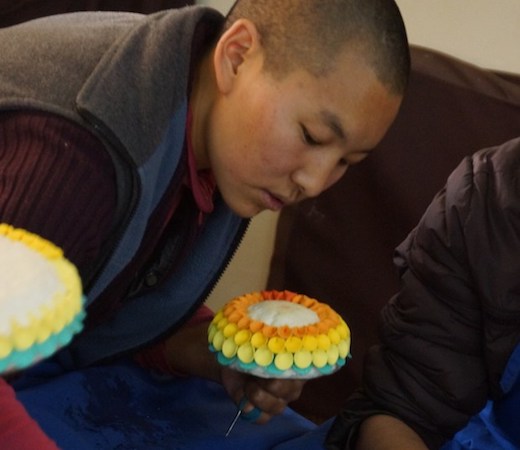
A nun at Dolma Ling Nunnery and Institute in India makes an elaborate colored flower out of butter. Photo by Nuns’ Media Team
It is the practice in Buddhism to offer flowers as a tribute to Buddha statues on altars. However, in winter when no fresh flowers can be found, flowers sculpted from butter are made as an offering. Other popular designs for Tibetan butter sculptures include the eight Auspicious Symbols in Tibetan Buddhism, the four harmonious friends – elephant, monkey, rabbit, and bird – and the sun and the moon.

Elaborate and colorful butter sculptures of flowers and Buddhist sacred symbols decorate an offering table for Losar or Tibetan New Year. These sculptures were made by the nuns at Dolma Ling Nunnery and Institute in northern India. In the lower left, you can see a sheep or ram made of butter. Photo by Nuns’ Media Team
Butter has always been highly valued in Tibetan culture. Its availability and its malleable quality in the cold climate of the Tibetan plateau and the Himalayas made it an ideal material for sculpting. Inside Tibet, the sacred Tibetan butter sculptures would be made from the butter of dri which are female yaks.
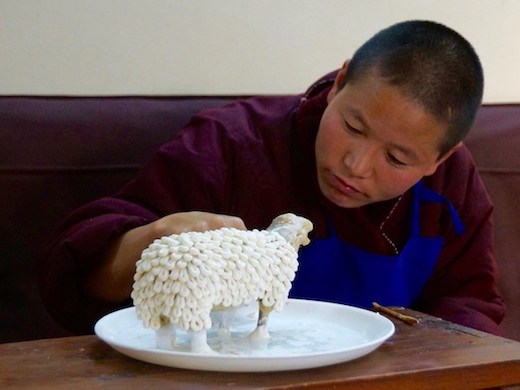
A Tibetan Buddhist nun creates an elaborate Tibetan butter sculpture of a ram for Tibetan New Year. She is learning the ancient art of making Tibetan butter sculptures at Dolma Ling Nunnery and Institute. Photo by the Nuns’ Media Team
Preserving the art of Tibetan butter sculptures
Making butter sculptures requires painstaking skill, learned from an excellent teacher and through years of practice. Like the famous Tibetan sand mandalas, butter sculptures are a unique Tibetan sacred art that has been handed down for centuries from teacher to student.
The increasing shortage of well-trained and skilled butter sculptors in Tibet means that it is crucial that in India the nuns learn this religious art as part of their course of studies in order to keep it from dying out.
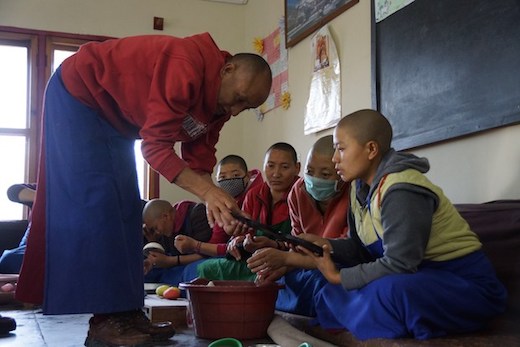
Tibetan nuns at Dolma Ling learning how to make butter sculpture. Photos by the Nuns’ Media Team
At Dolma Ling Nunnery and Institute in India, nuns have been learning how to make butter sculptures from their teacher Gen. Karma-la. He carefully takes them through all the steps and the significance of each butter sculpture technique. He says the nuns make excellent students, with their keen sense of color and design, their nimble fingers, and their endless patience.
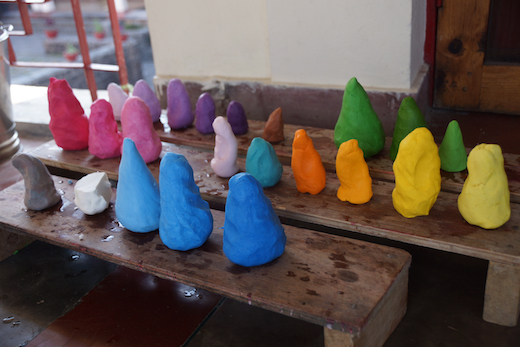
Mounds of colored butter ready for the nuns at Dolma Ling to make Tibetan butter sculptures for Losar, Tibetan New Year. Photo by the Nuns’ Media Team.
The Butter Sculpture Workshop at Dolma Ling
Creating butter sculptures in the hot climate of India is, as you can imagine, problematic. Several years ago, generous donors funded our project to create a special butter sculpture workshop at Dolma Ling Nunnery and Institute, a non-sectarian nunnery that is home to about 250 nuns.
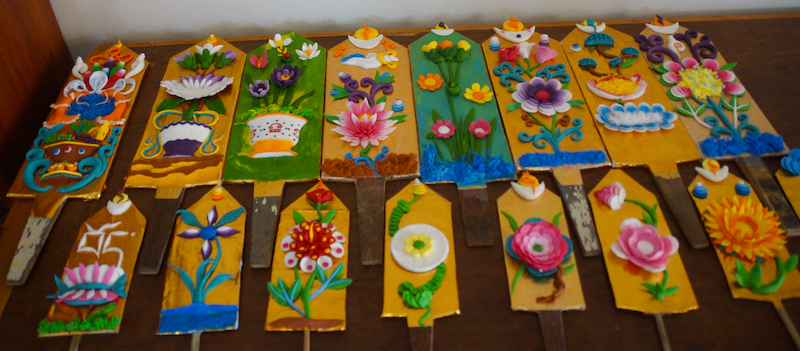
Tibetan butter sculptures made by the nuns at Dolma Ling for Losar, Tibetan New Year. Photo by the Nuns’ Media Team
Prior to that time, the nuns at Dolma Ling had been using a makeshift space at the nunnery that got very hot. They were only able to make sculptures during the very coldest months. Now a suitable space has been designated in the nunnery. The.room is cooler and has access to cold water in which to lay the butter and cool the nuns’ fingers.
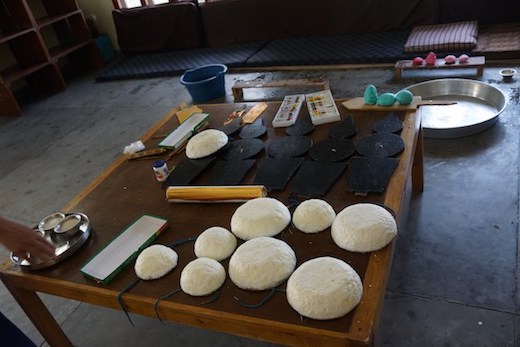
Rounds of butter, dyes, and other tools for making butter sculpture are laid out in preparation for making butter sculptures for Tibetan New Year at Dolma Ling Nunnery. Photo by the Nuns’ Media Team.

Is anything added to the butter in hot climates to make it easier to work with like bees wax?
Beautiful and inspiring. Thank you so much for this information and the pictures showing colorful butter flowers. They remind me of the rainbow of flowers that adorn the grassy fields in Tibet at certain times of year. It seems fitting that butter flowers celebrate Losar, Tibetan New Year, in the middle of winter. It is wonderful to know that a teacher and special cold studio are now provided to continue this ritual art.